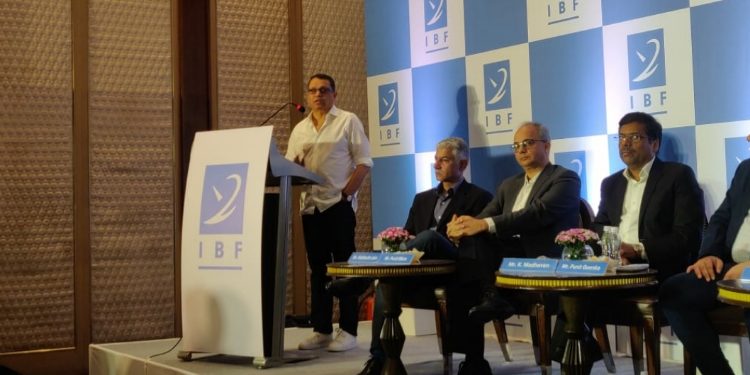It’s very rare when one sees all the stalwarts of the broadcast industry together at a forum, united. Rightly so because of the lethal and detrimental second version of the worst nightmare of a television professional, the NTO 2.0 which hit the industry on the first day of 2020.
Uday Shankar at the IBF press conference which was held yesterday spoke about the Impact of NTO 2.0 on the broadcasters and indicated the IBF taking the legal route to get out of the regulation. Shankar said, “The members of the IBF, more often than not, do not like to interact with the media. In fact, I don’t even remember in the last seven or eight years as to when did this ever happen.”
“The idea for the whole body to come together to address this detrimental issue is because we believe that our job is to create content, not become a part of it.”
“In less than a year, twice this exercise has been done. Now, to my mind, I’m not a legal person and I’m not a regulator but it doesn’t make sense. If thoughtful comprehensive collaborative exercise was done last year or two years ago then what is the need for this one?” asked Uday Shankar.
How NTO 1.0 was not for the consumer, Shankar said, “It really means that the previous exercise was not for the consumer, it hasn’t even educated the consumer, educated the ecosystem, about the new Tariff structure, even before it had started, I think, you know this. Despite software shortcomings, it was taking off the ground pretty well, you know, over a crore and a half people had gone for updates on our current channels. So it was moving in the right direction and then suddenly the whole thing has to be reset to zero.”
“So this kind of trigger happy regulatory intervention at a very fundamental level is not good for the industry, and the regulator seems to not care about that. A part of its job is also to create an enabling framework for the industry to grow and all stakeholders to benefit.”
How TRAI put something at a price for consumers when it was free Shankar said, “For the consumers to get the best guidance and best range of content that they that they deserve and finally, the point I want to make is that if the regulator is so concerned about bringing down the price to the consumer, then, why is the cable operators are being allowed to charge as much as 100 -160 rupees for FTA channels when technically they are free. These channels could be, obtained by the consumer free of charge.”
“So, something that in the previous regime was available for free. The regulator in the name of bringing down the burden on the consumer has actually let DPO’s to charge for it. This is exactly the point that the regulator, and all you reported that we had pointed out even then, that the prices for consumers can go up.”

















